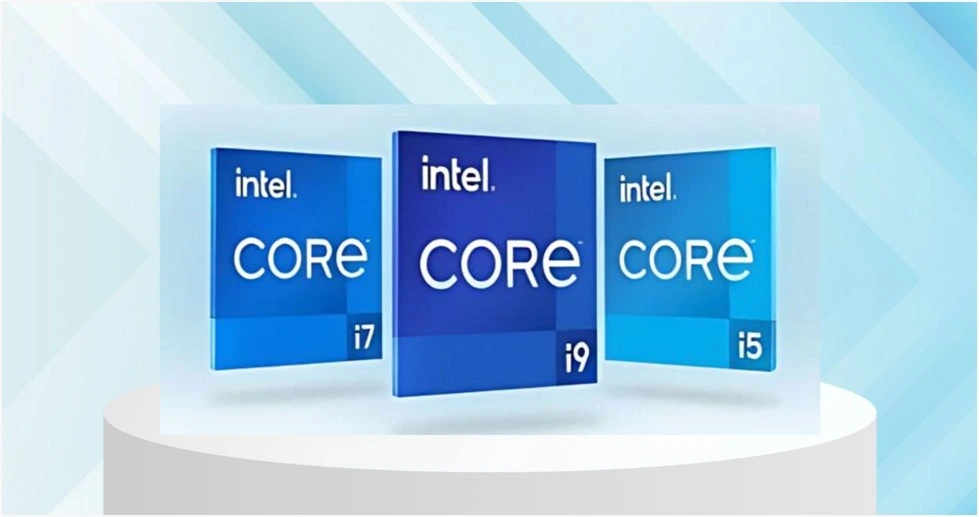Intel’s 14th and 13th-generation desktop processors have recently experienced instability, causing gamers and enthusiasts trouble. However, Intel says the root of the problem lies with motherboard manufacturers.
In a statement provided to hardware sites, Intel asserts that motherboard BIOS profiles override important thermal and power protections, pushing the CPUs outside their intended specifications.
Let’s look deeper at Intel’s claim and what motherboard makers are doing to address the situation.
Intel Outlines Motherboard Settings Causing High CPU Voltages and Heat
In their statement, Intel notes that analysis of affected CPUs shows signs of operating at sustained high voltages and frequencies during elevated temperatures. This points to the processors being run “out of specification.”
Specifically, Intel observes that many leading-edge motherboards set their default BIOS profiles to “disable thermal and power delivery safeguards designed to limit processor exposure to sustained periods of high voltage and frequency”. Some key settings Intel calls out include disabling Current Excursion Protection (CEP) and enabling the “IccMax Unlimited” bit.
Thermal Velocity Boost (TVB) and Enhanced Thermal Velocity Boost (eTVB) are also routinely shut off. Additional instabilities can arise from turning off power-saving C-states, using Windows’ “Ultimate Performance” mode, and increasing Intel’s Processor Limit 1 (PL1) and PL2 values beyond recommended thresholds.
Intel strongly advises motherboard partners to implement warning messages and provide a “default BIOS profile that matches Intel recommended settings” by default. This should help ensure CPUs remain within safe operating conditions.
Motherboard Makers Begin Addressing Settings Through BIOS Updates
Some leading motherboard manufacturers have already taken steps to remedy problematic defaults. ASUS was the first to release BIOSes containing a new “Intel Baseline Profile” option, which allows users to fall back to Intel-validated specifications easily.
This new mode lowers power limits and restores thermal protections. Gigabyte has also pushed beta firmware with a similar concept. MSI, meanwhile, is advising users through a detailed BIOS guide, teaching how to configure settings by Intel’s specs manually.
However, motherboard partners have yet to move as quickly as ASUS to address the problem directly through easy-access mode switches. It remains to be seen why MSI has not issued BIOSes with pre-configured profiles for its 600/700-series boards.

Do BIOS Defaults Warrant Blame on Motherboard Makers?
While motherboard settings play a role, some argue that Intel must also take responsibility. For years, Intel permitted vendors to run CPUs outside specifications by default—behavior that boosted review scores but now enables instability. Intel’s marketing also pushed the limits of silicon through terms like “Unlimited Power Tuning” and “Extreme Power Delivery.”
Of course, enthusiasts ultimately choose whether to adopt these extreme profiles. But average users expecting stock stability deserve faultless operation out of the box. Intel must insist on safer defaults through frank discussions with partners. Standards ensuring consistent, long-term performance across brands would restore confidence for all.
Users Face Performance Loss When Restoring Stability
A sobering point in this saga remains that while upcoming BIOSes promise stability, they come at a cost. Reverting to Intel specifications means losing substantial frequency and power enhancements unlocked through non-standard settings. Gamers reporting issues often see double-digit percentage drops in framerates after turning off aggressive motherboard tweaks.
So, while stability and long-term usability should be prioritized, the current situation highlights tradeoffs that end-users must make. Both Intel and motherboard makers play a role, with communication needing improvement to avoid unstable defaults while not hindering innovation. Overall, closer adherence to specifications would serve customers best for consistent, worry-free experiences.
Table Recapping Key Points of Intel’s Statement
| Issue | Resolution |
| High CPU voltages/temps due to disabled thermal/power protections | Enable protections like CEP and TVB/TVB. Limit PL1/PL2 per Intel specs. |
| Unlimited/undefined current settings | Disable “IccMax Unlimited” and specify safe current values. |
| Poor stability from OC-centric motherboard defaults | Provide new “Intel Baseline” profiles matching Intel settings. |
| Lack of warnings for extreme profile usage | Motherboard vendors will add warning messages for overclocking features. |
In conclusion, while enthusiasts may desire extreme performance without limits, users expect stable systems. Intel and motherboard partners must ensure specs enable safe, dependable computing by default through improved cooperation and clear guidelines.
With coming firmware updates and a public statement from Intel expected soon, the path forward hopefully brings optimized stability and opportunity for controlled experimentation.



















